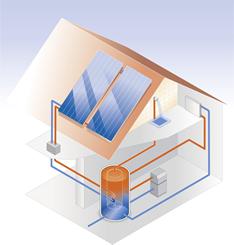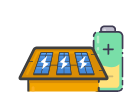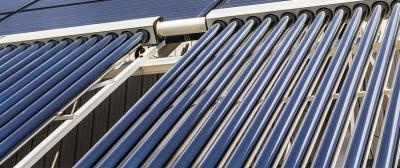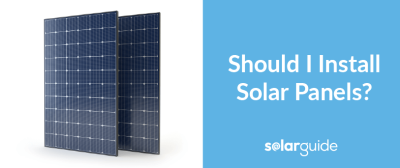What is Solar Thermal?
 Solar thermal energy (STE) is a technology used to provide heat for homes.
Solar thermal energy (STE) is a technology used to provide heat for homes.
How Does Solar Thermal Work?
The method (also referred to as solar water heating) works by installing solar panels on the roof of a property to gather energy from the sun. This energy is used to heat water which is then used to generate central heating and provide hot water.
Solar panels are made up of cells which contain liquid. It’s this liquid which absorbs solar radiation (energy) which heats up. The roof solar panels are connected to a hot water cylinder via pipes which allows the heat to be transported. When heat is gathered in the water cylinder it can then be used by the boiler for distribution.
Pros of Solar Thermal
- Solar thermal is a renewable energy gathered from a free resource – the sun. Other than the initial installation cost and maintenance there are no other fees or bills related to this type of energy.
- A key advantage of this technology is reduced heating bills as you will rely less on oil or gas to heat your property.
- Another key benefit is fewer carbon emissions, a reason why this type of technology is so favoured by the Government.
- People who install renewable technologies such as solar thermal may also qualify for the upcoming Renewable Heat Incentive, which sees applicants receive payments in relation to type of green technology they use.
Cons of Solar Thermal
- As solar thermal energy relies on the sun it is not a completely independent system so you will need a boiler or immersion-heater through the winter months to guarantee you have hot water.
- Installing solar panels can be costly, although the price has come down considerably over the last couple of years. The price is related to the size of system you buy and the Energy Saving Trust estimates that a typical installation can cost around £5,000.
Find local, MSC certified Solar Installers
Start your quote
Find local, MSC certified Solar Installers















